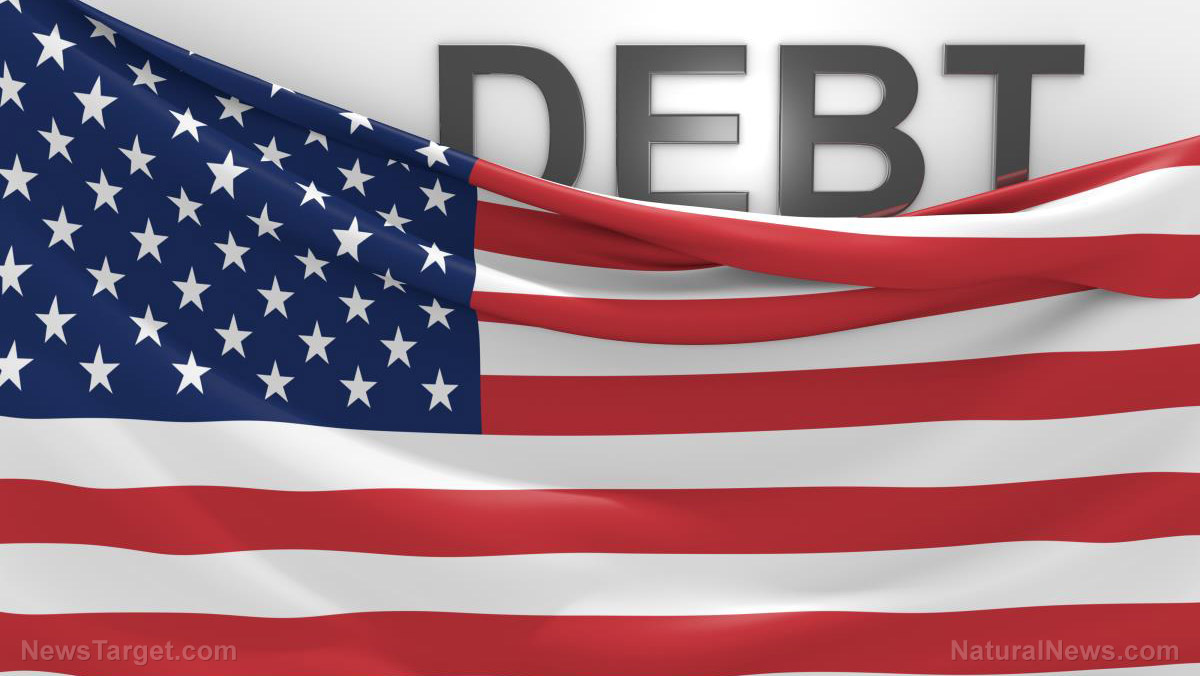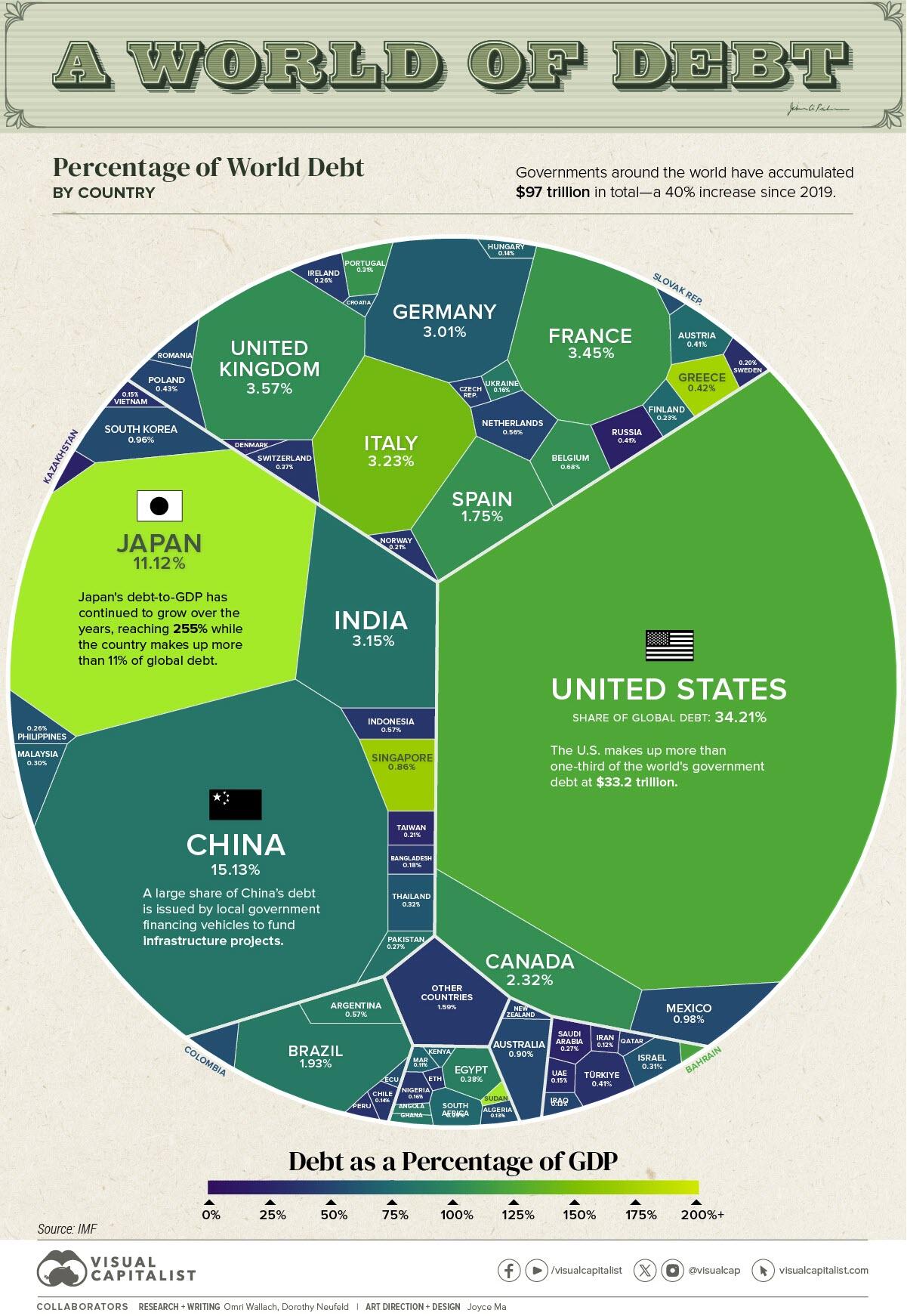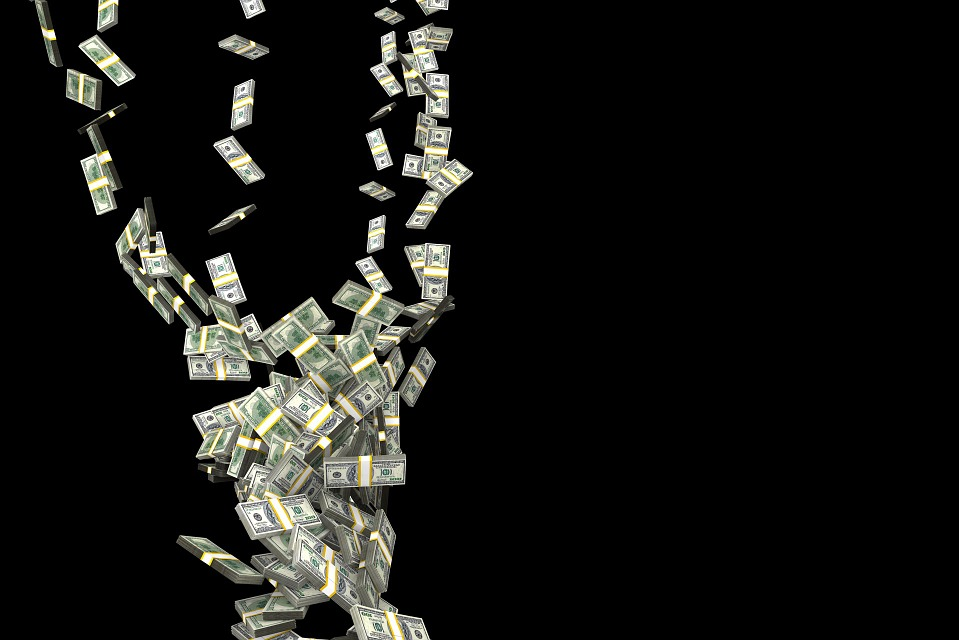 Parler
Parler Gab
Gab
 THE DEBT SPIRAL
Unless governments dramatically cut spending and/or raise taxes, this debt spiral will only get worse, especially if interest rates remain elevated.
The situation in the United States underscores the problem.
The national debt blew past $33 trillion on Sept. 15. Just 20 days later, it pushed about $33.5 trillion. It is now just a tick below $34 trillion.
Meanwhile, interest expense rose by 23% to $879 billion in fiscal 2023. Net interest, excluding intragovernmental transfers to trust funds, rose by 39% to $659 billion. Both of those numbers broke records.
Rising interest rates drove interest payments to over 35% as a percentage of total tax receipts in fiscal 2023. In other words, the government is already paying more than a third of the taxes it collects on interest expense.
The federal government spent $79.92 billion in interest expense to finance the national debt in November alone. That was more than national defense ($70 billion) and more than Medicare ($79 billion). The only higher spending category was Social Security.
Interest expense is only going to grow.
A lot of the debt currently on the books was financed at very low rates before the Federal Reserve started its hiking cycle. Every month, some of that super-low-yielding paper matures and has to be replaced by bonds yielding much higher rates. The weighted average interest rate on the government’s $26 trillion of outstanding Treasury securities rose to 3.10% in November. That compares with a weighted average rate of 2.22% in November 2022.
The bottom line is interest payments will continue to quickly climb much higher unless rates fall.
Financial analyst Jim Grant doesn’t think that will happen. He thinks we’re at the beginning of a generational bear market in bonds that will keep rates higher for the next several decades — no matter what the Federal Reserve does.
His analysis makes sense. As governments around the world struggle to finance more and more debt, the supply of government bonds in the market grows. That puts upward pressure on interest rates. Even if central banks try to push rates down, it will be a constant tug-o-war with the markets.
That means the only way out of this fiscal death spiral is significant spending cuts.
And we all know that the likelihood of significant government spending cuts is pretty close to zero.
The fuse is on a slow burn but at some point, the debt powder keg will blow. The results won’t be pretty.
Read more at: SchiffGold.com
THE DEBT SPIRAL
Unless governments dramatically cut spending and/or raise taxes, this debt spiral will only get worse, especially if interest rates remain elevated.
The situation in the United States underscores the problem.
The national debt blew past $33 trillion on Sept. 15. Just 20 days later, it pushed about $33.5 trillion. It is now just a tick below $34 trillion.
Meanwhile, interest expense rose by 23% to $879 billion in fiscal 2023. Net interest, excluding intragovernmental transfers to trust funds, rose by 39% to $659 billion. Both of those numbers broke records.
Rising interest rates drove interest payments to over 35% as a percentage of total tax receipts in fiscal 2023. In other words, the government is already paying more than a third of the taxes it collects on interest expense.
The federal government spent $79.92 billion in interest expense to finance the national debt in November alone. That was more than national defense ($70 billion) and more than Medicare ($79 billion). The only higher spending category was Social Security.
Interest expense is only going to grow.
A lot of the debt currently on the books was financed at very low rates before the Federal Reserve started its hiking cycle. Every month, some of that super-low-yielding paper matures and has to be replaced by bonds yielding much higher rates. The weighted average interest rate on the government’s $26 trillion of outstanding Treasury securities rose to 3.10% in November. That compares with a weighted average rate of 2.22% in November 2022.
The bottom line is interest payments will continue to quickly climb much higher unless rates fall.
Financial analyst Jim Grant doesn’t think that will happen. He thinks we’re at the beginning of a generational bear market in bonds that will keep rates higher for the next several decades — no matter what the Federal Reserve does.
His analysis makes sense. As governments around the world struggle to finance more and more debt, the supply of government bonds in the market grows. That puts upward pressure on interest rates. Even if central banks try to push rates down, it will be a constant tug-o-war with the markets.
That means the only way out of this fiscal death spiral is significant spending cuts.
And we all know that the likelihood of significant government spending cuts is pretty close to zero.
The fuse is on a slow burn but at some point, the debt powder keg will blow. The results won’t be pretty.
Read more at: SchiffGold.com
Government debt surpasses $34 TRILLION mark just FOUR MONTHS after it hit $33 trillion
By Arsenio Toledo // Share
In five years, nearly HALF of all human skills will be replaced by AI
By Ethan Huff // Share
Socialists in Argentina PROTEST against Milei’s proposed austerity measures
By Laura Harris // Share
Why 2024 will be “the year of chaos”
By News Editors // Share
Governments continue to obscure COVID-19 vaccine data amid rising concerns over excess deaths
By patricklewis // Share
Tech giant Microsoft backs EXTINCTION with its support of carbon capture programs
By ramontomeydw // Share
Germany to resume arms exports to Israel despite repeated ceasefire violations
By isabelle // Share










